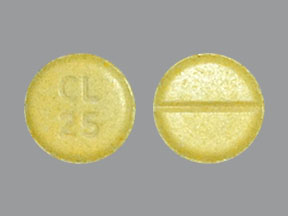Xenazine Disease Interactions
There are 7 disease interactions with Xenazine (tetrabenazine).
- Cardiac arrhythmias
- Depression
- Hepatic impairment
- Huntington's disease
- Dysphagia
- Hyperprolactinemia
- Hypotension
Tetrabenazine (applies to Xenazine) cardiac arrhythmias
Major Potential Hazard, Moderate plausibility.
Tetrabenazine can cause an increase in the corrected QT interval. QT prolongation can lead to the development of ventricular arrhythmias. The use of tetrabenazine should be avoided in patients with congenital long QT syndrome and in patients with a history of arrhythmias.
Tetrabenazine (applies to Xenazine) depression
Major Potential Hazard, Moderate plausibility.
The use of tetrabenazine is contraindicated in patients with untreated or uncontrolled depression. Tetrabenazine can increase the risk of depression and suicidal thoughts and behavior.
Tetrabenazine (applies to Xenazine) hepatic impairment
Major Potential Hazard, Moderate plausibility. Applicable conditions: Liver Disease
The use of tetrabenazine is contraindicated in patients with hepatic impairment. The safety and efficacy of exposure to the drug and other metabolites are unknown and it is not possible to adjust the dosage in hepatic impairment to ensure safe use.
Tetrabenazine (applies to Xenazine) Huntington's disease
Major Potential Hazard, Moderate plausibility. Applicable conditions: Huntington Disease
Patients with Huntington disease are prone to depression. Tetrabenazine can increase the risk of depression and suicidal thoughts and should be used with caution in patients with Huntington's disease. The benefits and risks of treatment should be considered before starting therapy, and patients should be under close observation for emergence or worsening of depression symptoms. The family and caregivers should also be informed of this risk and should be instructed to report any changes in behavior or any concerns to the treating physician.
Tetrabenazine (applies to Xenazine) dysphagia
Moderate Potential Hazard, Moderate plausibility. Applicable conditions: Huntington Disease
Tetrabenazine reduces dopaminergic transmission and can be associated with esophageal dysmotility and dysphagia. Caution should be exercised when used in patients with conditions that predispose to dysphagia. Special caution is advised in patients with Huntington's disease as dysphagia is a common symptom and it could lead to aspiration pneumonia.
Tetrabenazine (applies to Xenazine) hyperprolactinemia
Moderate Potential Hazard, Moderate plausibility. Applicable conditions: Osteoporosis, Breast Cancer
Tetrabenazine can elevate serum prolactin concentrations. This should be considered when therapy will be prescribed in patients with previously detected breast cancer. Additionally, chronic increase in serum prolactin has been associated with low levels of estrogen and increase risk of osteoporosis. If there is suspicion of hyperprolactinemia, appropriate laboratory testing is advised and treatment discontinuation should be considered.
Tetrabenazine (applies to Xenazine) hypotension
Moderate Potential Hazard, Moderate plausibility. Applicable conditions: Syncope
Tetrabenazine can induce postural dizziness and syncope and should be used with caution in patients who are vulnerable to hypotension.
Switch to professional interaction data
Xenazine drug interactions
There are 547 drug interactions with Xenazine (tetrabenazine).
Xenazine alcohol/food interactions
There is 1 alcohol/food interaction with Xenazine (tetrabenazine).
More about Xenazine (tetrabenazine)
- Xenazine consumer information
- Check interactions
- Compare alternatives
- Pricing & coupons
- Reviews (2)
- Drug images
- Side effects
- Dosage information
- During pregnancy
- Generic availability
- FDA approval history
- Drug class: VMAT2 inhibitors
- En español
Related treatment guides
Drug Interaction Classification
| Highly clinically significant. Avoid combinations; the risk of the interaction outweighs the benefit. | |
| Moderately clinically significant. Usually avoid combinations; use it only under special circumstances. | |
| Minimally clinically significant. Minimize risk; assess risk and consider an alternative drug, take steps to circumvent the interaction risk and/or institute a monitoring plan. | |
| No interaction information available. |
See also:
Further information
Always consult your healthcare provider to ensure the information displayed on this page applies to your personal circumstances.


